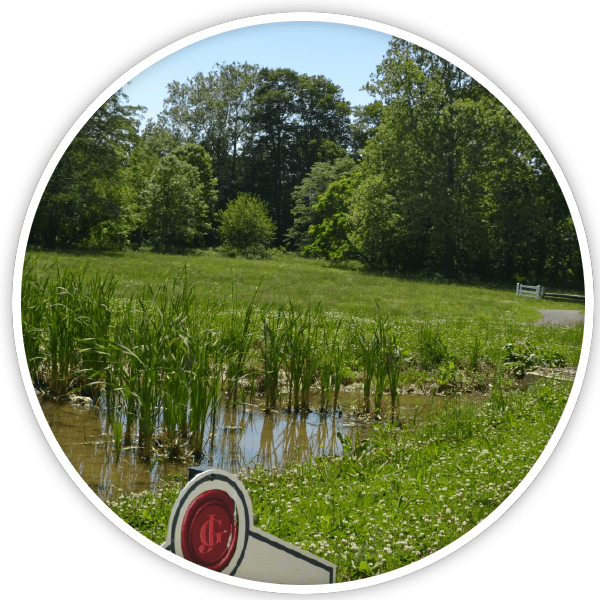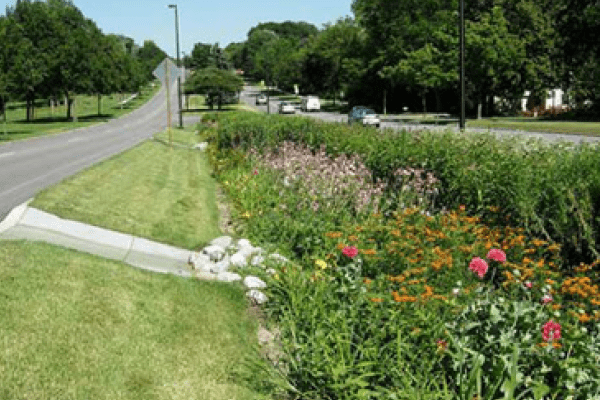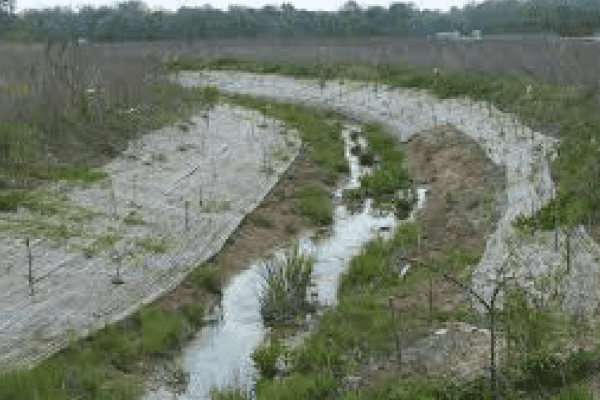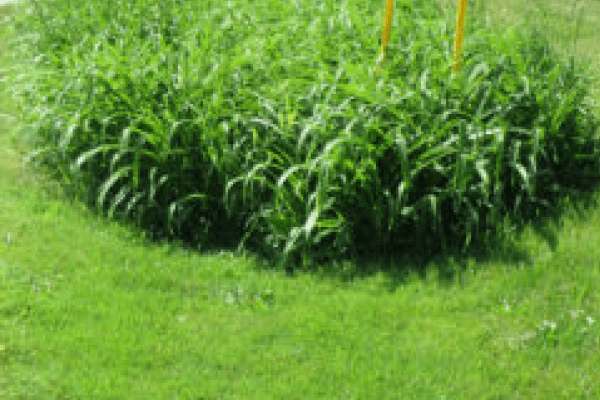 Swales are used to capture sheet flow from a parking lot or trail surface and in most places where a ditch is traditionally used.
Swales are used to capture sheet flow from a parking lot or trail surface and in most places where a ditch is traditionally used.
One of the three swale types described below are recommended as trailside drainage in place of a simple ditch for linear stormwater controls as needed adjacent to the trail. Swales can be placed adjacent to and hydraulically connected to permeable pavers where they can act as an inlet to the storage beneath surface pavers and act as a redundant connection to the gravel storage if the pavers become clogged. The three types of swales are: dry vegetated swales, wetland swales, and grass swales.
Design Metrics:
- Sized to convey the largest/average 24-hour, 10- to 15-year storm or other level of service specified by local stormwater control guidelines.
- Trailside drainage swales are to be designed such that no stormwater runoff sheet flow from the surrounding area flows over the surface of the trail.
- Longitudinal slopes for all swales are to be between 1% and 6% (less than 5% for grass swales).
- Side slopes for dry swales and wetland swales are to be between 3:1 and 5:1. Side slopes for grass swales can be flatter than 5:1.
- Channel bottoms for wetland swales are 2- to 8-feet wide. Channel bottoms for dry swales or grass swales are typically less than 8-feet, but can be larger if needed.
- Check dams are appropriate for all trailside drainage swales to provide limited detention storage, develop a milder slope, and/or develop a slower flow rate. Check dams shall be made of aggregate or rip rap.
- Freeboard is to be 6-inches minimum.
- Rip rap is only to be used as a check dam material or in localized areas where required for erosion control. No drainage swales are to be lined with rip rap.
- Grass swales may require turf reinforcement mats or erosion control blankets. See EROSION CONTROL AND STORMWATER POLLUTION PREVENTION PLAN (SWPPP) section (link).
 Dry Swales – PREFERRED MATERIAL
Dry Swales – PREFERRED MATERIAL
Dry Swales are broad shallow channels with vegetation covering the side slopes and channel bottom. They include an engineered soil mix, graded filter, and underdrain system. They are planted with dense, low growing native vegetation that can withstand periods of inundation and drought. Vegetation should be salt tolerant where salt is to be used for de-icing. Dry swales are linear bioretention cells and are considered green infrastructure.
BEST USE AREAS:
Dry swales are particularly applicable in natural depressions adjacent to trails, parking lots and adjacent to permeable pavers.
PROS:
Dry swales and wetland swales provide volume reduction, water quality treatment, channel protection storage and Peak Flood Detention Storage; aesthetics
CONS:
Requires regular maintenance.
 WETLAND SWALES – PREFERRED FOR HIGH WATER TABLE AREAS
WETLAND SWALES – PREFERRED FOR HIGH WATER TABLE AREAS
Wetland Swales are broad shallow channels with native vegetation covering the side slopes and emergent vegetation covering the channel bottom. They have no filter bed or underdrain. They are planted with dense, low-growing native vegetation that can withstand periods of inundation and drought and where soils have a high salt content.
BEST USE AREAS:
Wetland swales are well suited to linear applications where the water table is high or stormwater tends to collect for extended periods of time.
PROS:
Dry swales and wetland swales provide volume reduction, water quality treatment, channel protection storage and Peak Flood Detention Storage;aesthetics.
CONS:
Requires regular maintenance.
 GRASS SWALES
GRASS SWALES
Grass Swales are grass lined channels with no special provisions to maximize infiltration or reduce pollution such as those for dry swales or wetland swales. It is recommended that the plantings in grass swales be native or adaptive grasses that can provide a root depth of up to 15 feet and be allowed to grow to full height (not mowed) to improve infiltration and provide some water quality benefit.
BEST USE:
Where concentrated runoff is expected to cause erosion damage. Isolated portions of the trail where access for maintenance may be limited or difficult.
PROS:
Less frequent maintenance required.
CONS:
Doesn’t provide water quality and volume benefits like dry or wetland swales.
